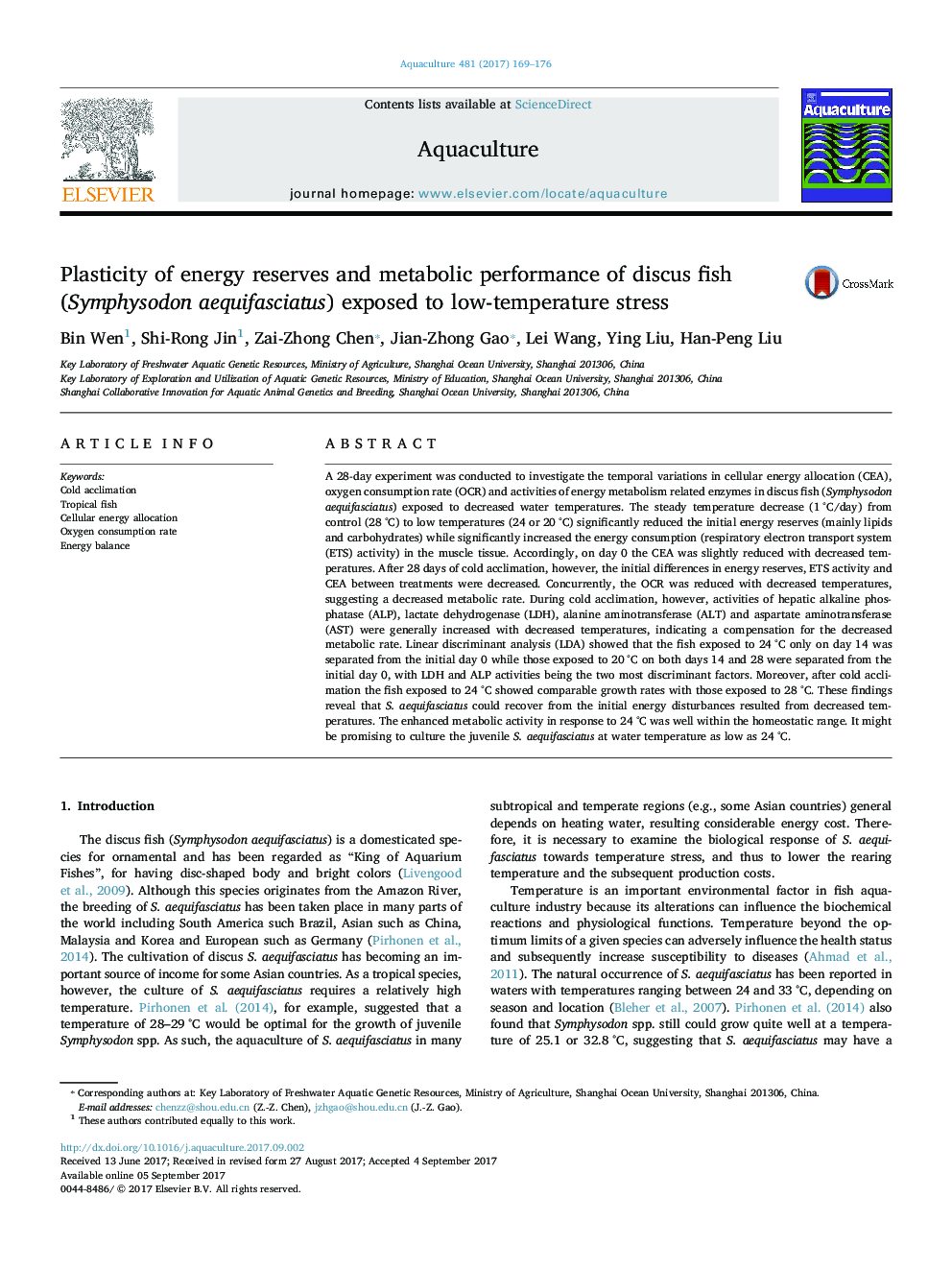| کد مقاله | کد نشریه | سال انتشار | مقاله انگلیسی | نسخه تمام متن |
|---|---|---|---|---|
| 5538963 | 1552807 | 2017 | 8 صفحه PDF | دانلود رایگان |
عنوان انگلیسی مقاله ISI
Plasticity of energy reserves and metabolic performance of discus fish (Symphysodon aequifasciatus) exposed to low-temperature stress
دانلود مقاله + سفارش ترجمه
دانلود مقاله ISI انگلیسی
رایگان برای ایرانیان
کلمات کلیدی
موضوعات مرتبط
علوم زیستی و بیوفناوری
علوم کشاورزی و بیولوژیک
علوم آبزیان
پیش نمایش صفحه اول مقاله

چکیده انگلیسی
A 28-day experiment was conducted to investigate the temporal variations in cellular energy allocation (CEA), oxygen consumption rate (OCR) and activities of energy metabolism related enzymes in discus fish (Symphysodon aequifasciatus) exposed to decreased water temperatures. The steady temperature decrease (1 °C/day) from control (28 °C) to low temperatures (24 or 20 °C) significantly reduced the initial energy reserves (mainly lipids and carbohydrates) while significantly increased the energy consumption (respiratory electron transport system (ETS) activity) in the muscle tissue. Accordingly, on day 0 the CEA was slightly reduced with decreased temperatures. After 28 days of cold acclimation, however, the initial differences in energy reserves, ETS activity and CEA between treatments were decreased. Concurrently, the OCR was reduced with decreased temperatures, suggesting a decreased metabolic rate. During cold acclimation, however, activities of hepatic alkaline phosphatase (ALP), lactate dehydrogenase (LDH), alanine aminotransferase (ALT) and aspartate aminotransferase (AST) were generally increased with decreased temperatures, indicating a compensation for the decreased metabolic rate. Linear discriminant analysis (LDA) showed that the fish exposed to 24 °C only on day 14 was separated from the initial day 0 while those exposed to 20 °C on both days 14 and 28 were separated from the initial day 0, with LDH and ALP activities being the two most discriminant factors. Moreover, after cold acclimation the fish exposed to 24 °C showed comparable growth rates with those exposed to 28 °C. These findings reveal that S. aequifasciatus could recover from the initial energy disturbances resulted from decreased temperatures. The enhanced metabolic activity in response to 24 °C was well within the homeostatic range. It might be promising to culture the juvenile S. aequifasciatus at water temperature as low as 24 °C.
ناشر
Database: Elsevier - ScienceDirect (ساینس دایرکت)
Journal: Aquaculture - Volume 481, 1 December 2017, Pages 169-176
Journal: Aquaculture - Volume 481, 1 December 2017, Pages 169-176
نویسندگان
Bin Wen, Shi-Rong Jin, Zai-Zhong Chen, Jian-Zhong Gao, Lei Wang, Ying Liu, Han-Peng Liu,